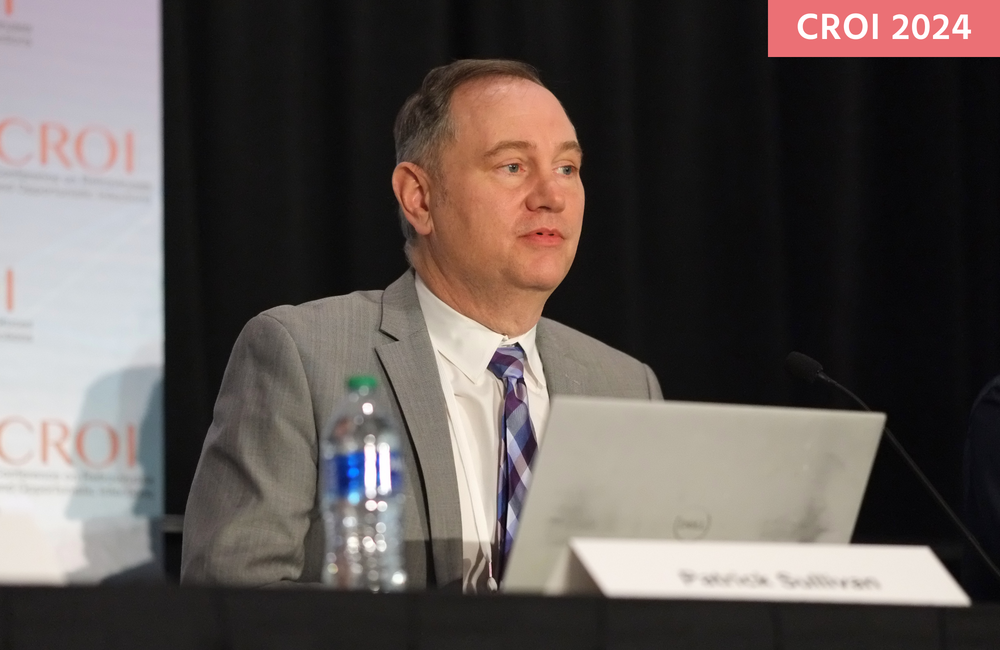
The number of new HIV diagnoses has continued to drop steeply between 2012 and 2021 in US states with the highest coverage of PrEP (regular medication to prevent HIV), according to research presented by Dr Patrick Sullivan at the Conference on Retroviruses and Opportunistic Infections (CROI 2024) yesterday.
An eightfold difference in annual changes to HIV diagnosis rates was seen between states with high PrEP coverage based on how many people need it, when compared to those states with the lowest PrEP coverage. Access to PrEP through drug assistance programmes and state-level Medicaid expansion remains a crucial, central factor.
Background
HIV PrEP uptake in the US has increased steadily from when it was first approved in 2012, with an estimated 363,957 people using it in 2022. However, to accurately estimate PrEP’s effectiveness in reducing the number of people acquiring HIV, it is important to account for the impact of other forms of HIV prevention, especially the effects of viral suppression – as people with an undetectable viral load cannot pass on HIV (undetectable equals untransmittable or U=U).
Additionally, there is the question of whether people using PrEP take it consistently, as its high effectiveness is dependent upon it actually being taken. At the population level, the greatest impact is seen when those who most need PrEP, such as gay and bisexual men who have condomless sex, are prescribed it and use it consistently.
The study
To gauge PrEP’s effectiveness at the country level, Sullivan and colleagues used US PrEP prescription and pharmacy refill data from 2012 to 2021, on a state-by-state basis. They then considered the proportion of PrEP users per 100 people who have US Centers for Disease Control and Prevention (CDC) indications to use PrEP during each year – this provided an estimate of PrEP coverage based on need.
For each state, they considered yearly percentage changes in HIV diagnosis rates between 2012 to 2021 and compared them to PrEP coverage data. These estimates were then adjusted to account for state-level viral suppression for the previous year, as this would impact later HIV diagnoses.
Findings
While some states, such as Washington DC, saw large percentage drops in the estimated annual change in HIV diagnoses between 2012 and 2021 (a decrease of 12%, 95% confidence Interval: -13% to -11%) others saw increases in this figure, such as West Virginia (an increase of 11%, 95% CI: 5% to 16%).
Average PrEP coverage ranged from a low of 4% in West Virginia to a high of 22% in New York. For those with the lowest levels of PrEP coverage to PrEP indications, there were possible small increases seen in HIV diagnosis rates (2% increase, 95% CI: -0.7% to 4.1%). In contrast, there were decreases in those states with higher levels of PrEP coverage to PrEP indications. States with the highest coverage saw an 8% decrease (95% CI: -9.3% to -6.8%) in the annual estimated percentage change in HIV diagnoses between 2012 and 2021, after accounting for yearly changes in viral suppression at the state level.
Conclusion
While Sullivan concluded by stating that this type of analysis cannot prove causation, it does provide strong evidence for what is known as a dose-response relationship: as PrEP coverage goes up among those who most need it, HIV diagnosis rates consistently go down. Importantly, this relationship was seen independent of viral suppression rates.
“Our data suggest that PrEP coverage is a meaningful measure to assess the progress of PrEP programmes. However, our analysis also documented stark differences in the trajectories of PrEP programmes among US states: there was an eightfold difference between the extent to which PrEP needs were met between the lowest and highest performing states,” he concluded. “When we think of PrEP coverage, there’s a lot of work to get us above the current coverage levels. States that have Medicaid expansion and drug assistance programmes fare better than those that don’t when it comes to ensuring PrEP coverage.”
Sullivan P et al. Association of State-Level PrEP Coverage and State-Level HIV Diagnoses, US, 2012-2021. Conference on Retroviruses and Opportunistic Infections, Denver, abstract 165, 2024.
